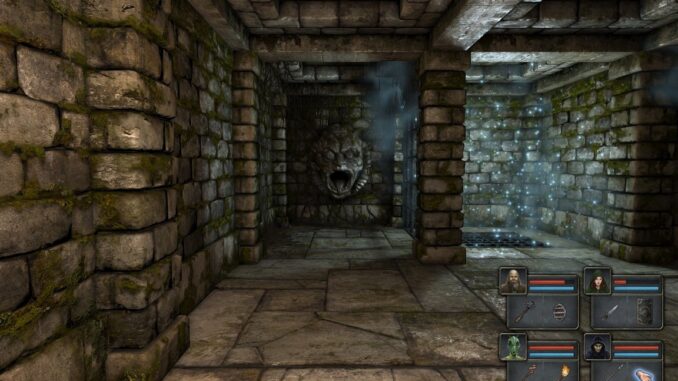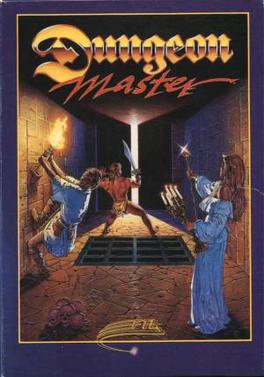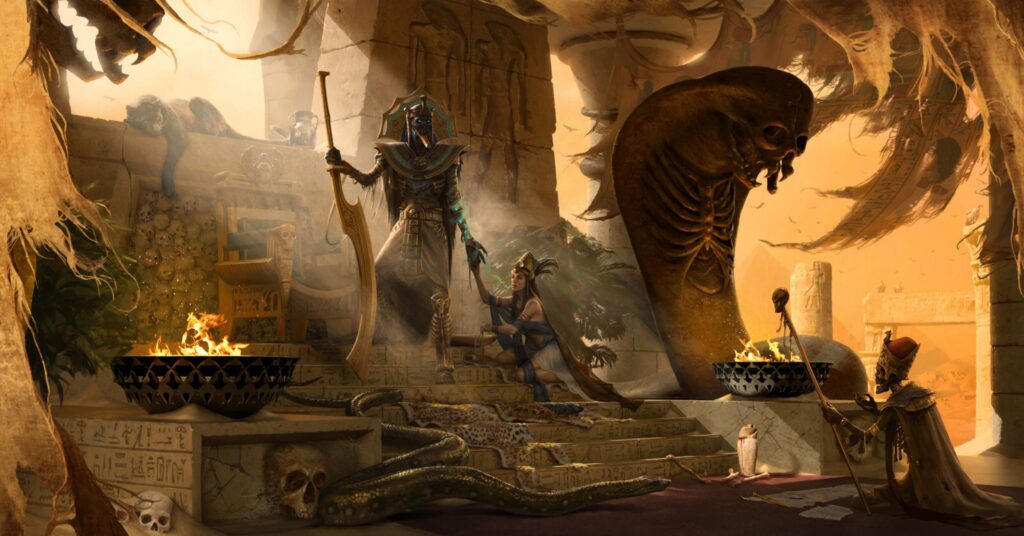
A while back I mentioned that I had been bitten by a bug and wondered how easy it would be to adapt the Sentinel Comics Roleplaying Game to run epic high fantasy – after all, D&D characters, especially in more recent editions of the game, are often larger than life heroes who would not look completely out of place in a comic book adventure – armed with powerful magic, gifts from deities, and ancient esoteric weapon techniques coupled with a strong drive to make a difference in the world.

I started by looking at creating a fantasy hero using the character creation rules and was pretty happy with the paladin that resulted from my experiment. But fantasy roleplaying games often have a hallmark that doesn’t always translate well to a game with a bigger narrative focus to them – the ever classic dungeon crawl.
But I hinted that the Sentinel Comics Roleplaying Game actually gives all of the tools necessary to do what I think could be a fun and compelling dungeon crawl without the actual crawl. These tools are of course – environments, the scene tracker, and challenges.
I’ve discussed my absolute adoration of the scene tracker at length in other articles, and so I’ll keep my reminder of what it is brief. At its core, the scene tracker is a ticking clock that counts down to the end of the scene, regardless of whether or not the heroes have accomplished all they need to, potentially leading to greater challenges and twists further in the adventure. As the tracker ticks away, it moves through different colored zones – green, yellow, and red, each of them describing a more dire situation and giving the heroes access to more powerful abilities as their desperation fuels their actions. Both environments and challenges are linked to the scene tracker.
At its core, the environment is the location that the characters find themselves in and is meant to provide a strong frame that they can use to play their narrations off of. But the environment is also its own character and gets its own turn in the action order after everyone else has gone. It can be a source of new threats and twists, and has a dice pool made up of three dominant traits that can be used to quickly paint a picture of the scene in order to accomplish any actions it may have access to. For example – a city park that is currently being attacked by a villain that summons movie dinosaurs may have the following environment:
Central Jurassic Park – Panicked Picnic-Goers d8; Tasteful, But Expensive Landscaping d6; Friggin’ Dinosaurs! d8
When the environment gets its turn, it advances the scene tracker by a step, and activates all threats it has introduced into the scene, marching one step closer to the end of the line, but with the benefit of potentially powering up the heroes and giving them access to their more powerful abilities.
Challenges are exactly what they sound like – things that the heroes must overcome that aren’t simply enemies they can punch. Civilians that have been taken hostage or otherwise imperiled; bombs that need to be disarmed; enemies with powerful arcane, esoteric, or technological defenses that need to be overcome – all of these are challenges and are approached with the Overcome action. Sometimes they are simple enough to be accomplished with a single check, while some more complex or delicate tasks may require two or even three successful overcome actions. Especially complex challenges may have even multiple parts to them and even include branching paths or have different ways they can be approached.
So, I think it stands to reason that a combination of a complex challenge, a suitable environment, and a scene tracker to push the action can emulate a dungeon crawl pretty effectively without losing the narrative action of such a game. By way of example, let’s take a look at a basic idea that is common to a lot of fantasy fiction: the players have to enter a tomb to obtain a magical macguffin, but a doomsday cult has begun a ritual to use the same macguffin to bring a long dead warlord back to life where he will attempt to cover the land in a new darkness. The heroes must contend with the cult’s soldiers and the dangers of the tomb itself while they make their way through the tomb to stop the ritual.

The first step is to choose a scene tracker – the standard tracker has eight spaces: two in the green zone, four in the yellow zone, and two in the red zone. Considering that this is meant to be something of an exploration mixed with some combat action, that might be too few turns. Adding an extra space to each section should give more than enough time while still keeping things moving when there aren’t any extant threats to worry about and still keep the pressure on the heroes to keep moving forward. And there’s also very clear stakes as to what will happen should they fail to accomplish their goal in time.
The next thing is to design the environment. This tomb contains the remains of a long dead warlord that was hidden away underneath a regular looking sepulcher to keep his remains out of the hands of his followers and has been dormant and abandoned for centuries. So let’s give it the following traits: Cobweb-Choked Passages d6, Sputtering Magical Torches d6, and Crumbling Architecture d8. These traits inspire some possible twists and threats that can be introduced into the scene during the environment’s turn – giant spiders, sudden darkness (or blinding light) to hinder the heroes, and pitfalls or collapsing walls that can stymie their progress or even hurt them. The cult also has soldiers patrolling the tomb to watch out for any interlopers, so they can be a ready source for twists as well when the environment’s turn comes up.
Now we come to the challenge itself – this feels like a complex challenge that has several stages the heroes must accomplish before they can move on to the next stage. It might be framed as such –
The Warlord’s Secret Tomb, Part 1
This part consists of two overcome actions – discovering or divining which sepulcher in the graveyard is the one that contains the hidden tomb underneath it and then finding the secret entrance hidden within that will take them deeper into the hidden tomb. Obvious threats include the cult’s soldiers or other undead creatures that haunt the graveyard and want to feast on the heroes’ lifeforce.
The Warlord’s Secret Tomb, Part 2
This part consists of the players actually making their way through the various dangers of the tomb to locate the burial vault. But instead of playing out a room by room dungeon crawl, you’re going to frame it through one of several different approaches – maybe a stealth approach that will require more successful overcome actions or an action forward approach that will require fewer successes, but will put the cultists on high alert, impacting their strength in the final battle. Twists can be introduced here to stymie the heroes, represented through the environment rolling to give them penalties through the Hinder action, drain their health, or even introduce new challenges they have to overcome before they can continue such as finding another way around a tunnel that is now full of collapsed rubble. Or if they’re action forward, the twists can include more minions they have to contend with as they fight their way through the tomb.
The Warlord’s Secret Tomb, Part 3
This part finds the heroes locked out of the burial vault where the ritual to resurrect the warlord is taking place and they must find a way to bring down the magical shield. If the cultists are on high alert the shield might be hardened, requiring an additional overcome action. Or they may have magically fortified themselves, giving the soldiers inside the vault bonuses they can use against the heroes if they do manage to breach the shield.
The Warlord’s Secret Tomb, Part 4
Finally, the heroes have to disrupt the ritual. This room contains at least a number of minions and a lieutenant for the heroes to contend with. If you really want to put the screws to them, there might even be a full-fledged Villain leading the ritual. The heroes can accomplish their goal a number of ways – defeating the cultists will for sure stop the ritual – you can’t finish the task if you’re subdued or killed. But they might also think to counter it with a magical ritual of their own. The air in this room is absolutely charged with dangerous magical energies and the most powerful and dangerous of the cult’s soldiers stand opposed to the heroes. The environment likely changes to reflect this zoomed in section of the dungeon crawl and new twists and challenges can emerge from that. Can the heroes overcome the cult? Or will they succeed in their plans? And even if the heroes do emerge victorious, what consequences can that much unfocused magical energy have on the tomb and the surrounding land?
So there you have it – a dungeon crawl done without a room by room, square by square slog of listening at doors and checking them to make sure they aren’t trapped with several encounters designed to drain a party of just enough of their resources to make the final encounter challenging that could stretch over multiple game sessions. Instead, this entire scene could easily be run in a single evening – maybe with more action leading up to and/or following it with a party that understands the game rules and really engages with the challenge mechanics.
The more I think about this concept, the more I come to realize that this system that has been created for the Sentinel Comics Roleplaying Game might be as close to my “platonic ideal” of a game that combines heavy narrative focus with some crunchier mechanics that I’m likely to find. And I can’t overstate how very excited I am to continue this experiment and see where I can take it.
